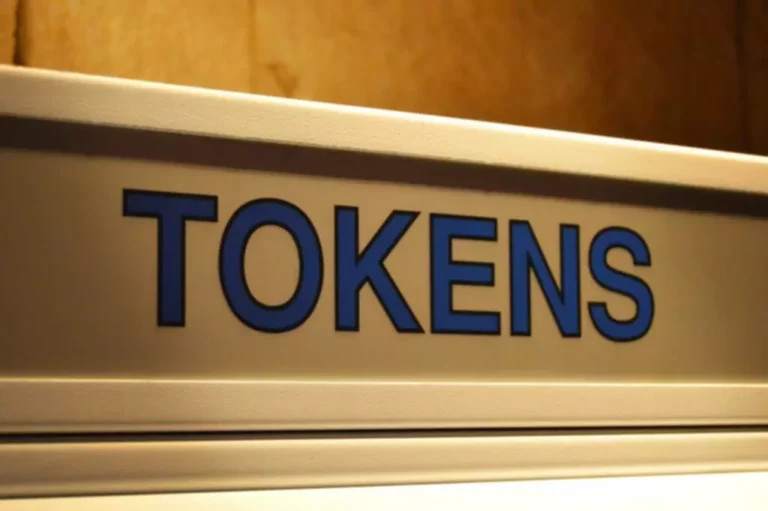Initial DEX Offering IDO Explained: How to Participate in the Next Crypto Launch
Content
To enter an IDO, you will need a crypto wallet that can connect to DApps like MetaMask or Binance Chain Wallet. You will also need some crypto to buy the tokens and to pay for transaction fees. The exact crypto you’ll need will depend on the sale, and initial dex offering development company could even be LP tokens if you’re taking part in an IFO. BNB-CAKE LP tokens are then locked for the new tokens, and the project receives the BNB while the CAKE is burned. The number of tokens you get will depend on how many participants there are in the sale, and any excess funds staked will be returned to you.
What Is an IDO (Initial DEX Offering)?

In June 2019, the Raven Protocol was the first crypto project to launch as an IDO. However, funds must be locked in smart contracts before tokens are issued to investors. An Initial Dex Offering (IDO) is a method of fundraising for cryptocurrency projects where tokens are offered to the public through a decentralized Proof of space exchange (DEX). Unlike Initial Coin Offerings (ICOs) or Initial Exchange Offerings (IEOs), IDOs are conducted on a decentralized platform without intermediaries.
VI. How to Participate in an IDO?
Another advantage of IDOs is that the issued token is promptly listed on the decentralized exchange (DEX) where the IDO occurred. In an Initial DEX Offering, a crypto project initiates the offering of its tokens directly to the https://www.xcritical.com/ public through a decentralized exchange. The process begins with the creation of tokens, which are then made available for purchase on the DEX.
What is Initial DEX Offering? Intro to ICO, IDO, and IEO
- They cannot monitor who bought how many coins, thus risking the loss of control over the project once a large-scale investor buys and holds the major portion of their tokens.
- Projects list their tokens on a DEX, and investors can purchase them directly.
- The project also manages investors’ funds, creates and runs smart contracts.
- This subsidiary of Binance gives access to over 10 million users to IDO projects.
- In most cases, once the subscription period is over, the tokens will be transferred to your wallet.
- The evolution continued with the emergence of token sales on decentralized exchanges (DEXs), known as Initial DEX Offerings (IDOs), providing immediate liquidity, immediate trading, and lower costs for listing.
Another risk is IDO-specific, which is the limitation of the token’s creator over the token launched via an IDO. They cannot monitor who bought how many coins, thus risking the loss of control over the project once a large-scale investor buys and holds the major portion of their tokens. These pools are essential for providing liquidity post-sale, ensuring that investors can buy and sell the new tokens easily. Liquidity pools are funded by pooling two assets at a predetermined ratio to support seamless trading.
How Blockchain Transforms the Gaming Industry
A personal advice I can offer to those considering participating in an IDO is to conduct thorough research on the project, evaluate the team’s expertise, and assess the market potential. Additionally, it is crucial to understand the risks involved and only invest what you can afford to lose. This ETH-based launchpad started hosting IDOs in 2020, helping users and IDO creators come together and enjoy mutually satisfying, secure terms. The platform also has its own SWAP token that allows members to stake for new IDOs. To counter these risks and ensure a successful IDO, projects must adhere to best practices such as KYC regulations that are made easier through tokenization platforms like Bitbond Token Tool.
Rather than lock their tokens directly, investors must first stake in a Decentralized Finance (DeFi) LP to earn LP tokens. For example, a project wanting to sell its token for BNB in an IFO on PancakeSwap will require investors to stake BNB and CAKE in the BNB-CAKE LP. IDOs provide a cheap and simple way for projects to distribute their tokens. IDOs have been around for a while, but they are still evolving and providing new models like the Initial Farm Offering (IFO). We may also see increasing KYC requirements as the area becomes more regulated. Additionally, instead of waiting for an exchange to approve a project, vocal community members are the ones who vet projects and tokens, which opens the door for small projects and massive collaborations.

This involves conducting thorough market research, developing a compelling project proposition, and establishing partnerships within the crypto community. By setting clear goals, establishing a solid team, and creating an engaging marketing strategy, projects can maximize their chances of a successful IDO. Initial DEX Offering has emerged as a vital fundraising mechanism in the cryptocurrency industry. By utilizing DEX platforms, it eliminates the need for intermediaries, reduces costs, and empowers retail investors.
The rise of Initial DEX Offerings has sparked discussions on regulatory frameworks and investor protection within the crypto market. As the landscape evolves, industry stakeholders are exploring ways to balance innovation with investor safeguards, ensuring the sustainable development of decentralized fundraising mechanisms like IDOs. ICO is also a crowdfunding model for the launch of new crypto coins into circulation. Second, ICOs are less attractive for long-term investments because of the high scam and fraud risk they entail.
This openness not only streamlines the process but also allows projects to showcase their potential to a diverse group of investors from the outset. As the cryptocurrency ecosystem evolves, Initial DEX Offering will continue to play a significant role in democratizing finance, promoting decentralization, and fostering innovation. The ability to raise funds directly from the public, while maintaining security and transparency, will drive wider adoption of IDOs in the future. We anticipate a surge in the popularity of IDOs, with more projects recognizing the benefits of decentralized fundraising. Technical advancements, such as the integration of Layer-2 scaling solutions and new DEX features, will further enhance the efficiency and accessibility of IDOs.
By conducting an IDO, cryptocurrency projects can leverage the decentralized nature of DEX platforms to enhance transparency, foster community engagement, and build a strong network effect. The token distribution through IDOs also helps establish a diversified and committed base of supporters. The IDOs function as fundraising for the companies launching their branded tokens and wishing to get them into broad circulation as soon as possible. IDOs are typically done by the DEXs – decentralized exchanges on which the new token is traded for other tokens and stable coins. Thus, the new token’s owner gets the benefit of the DEX’s liquidity, which may help jumpstart the new token quicker than through an ICO.
IDOs provide a more transparent and accessible way for projects to distribute tokens and raise funds, bypassing the centralized control of traditional exchanges and investment platforms. IDO stands for Initial DEX Offering, which is a new fundraising model that allows cryptocurrency projects to launch their native token or coin through a decentralized liquidity exchange. IDOs are becoming increasingly popular in the world of crypto as they offer a more secure and transparent way of fundraising. Understanding the principle of DEX offering is possible once a DEX concept is clear. DEXs, or decentralized exchanges, are a modern alternative to CEX – centralized exchanges – where the users can trade and exchange their crypto assets. Even though the outcome for ICOs, IEOs, and IDOs is the same, these fundraising approaches are quite different.
Initial DEX Offering (IDO) is a type of crypto funding in which tokens are distributed among investors on a decentralized exchange (DEX). The main purpose of the IDO is to ensure security levels by issuing the tokens immediately when investors receive funds. The launchpad provides users with access to the IDO and the ability to lock in their funds in exchange for the project’s tokens. The launchpad also ensures that the IDO is conducted in a fair and transparent manner.
IDOs will lock up some of the funds raised in liquidity pools to create a liquid market post-sale. A token offering is usually an exciting opportunity for investors in the crypto ecosystem. Looking back at the ICO (Initial Coin Offering) craze of 2017 on Ethereum (ETH), it wasn’t all entirely positive. Scams and rug pulls were widespread, and investors often suffered big losses.
An Initial DEX Offering is a decentralized fundraising method that allows cryptocurrency projects to raise funds directly from the public through a decentralized exchange (DEX). An Initial DEX Offering (IDO) enables projects to launch their tokens directly on decentralized exchanges (DEXs), bypassing traditional initial coin offering (ICO) or initial exchange offering (IEO) processes. This approach democratizes funding, enabling anyone in the crypto community to contribute, thereby fostering a diverse and supportive community from an early stage. ICO, or Initial coin offering, is a fundraising method used by new cryptocurrency projects to raise capital for their development. The primary issues with ICOs revolved around the absence of control measures and investor protections, as project teams were not subjected to due diligence. This lack of oversight allowed numerous ICO projects to make lofty promises of substantial returns, leading to some being considered quick money-making schemes or fraudulent endeavors.
Deja una respuesta